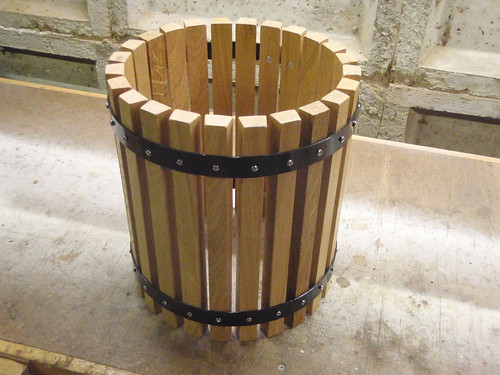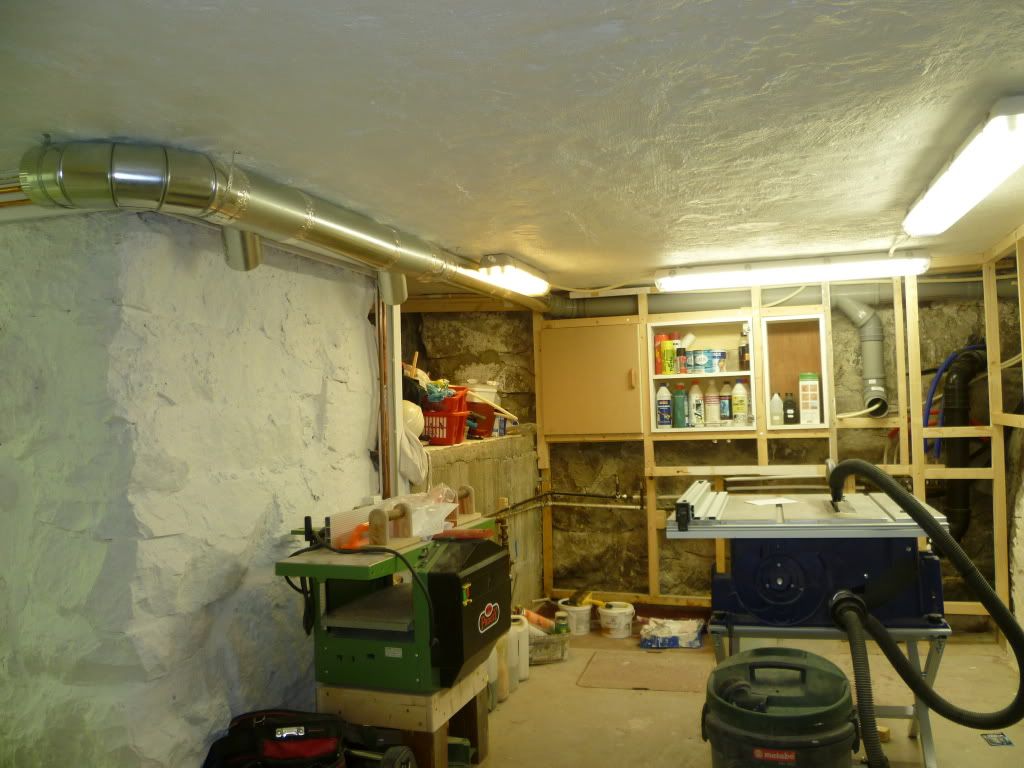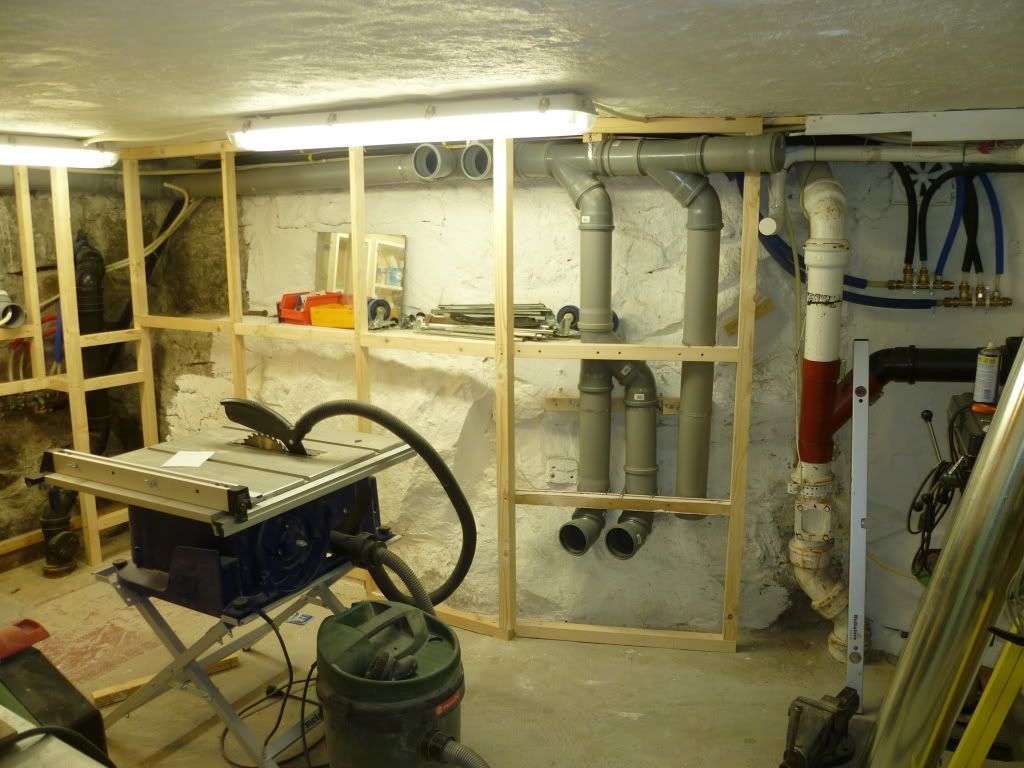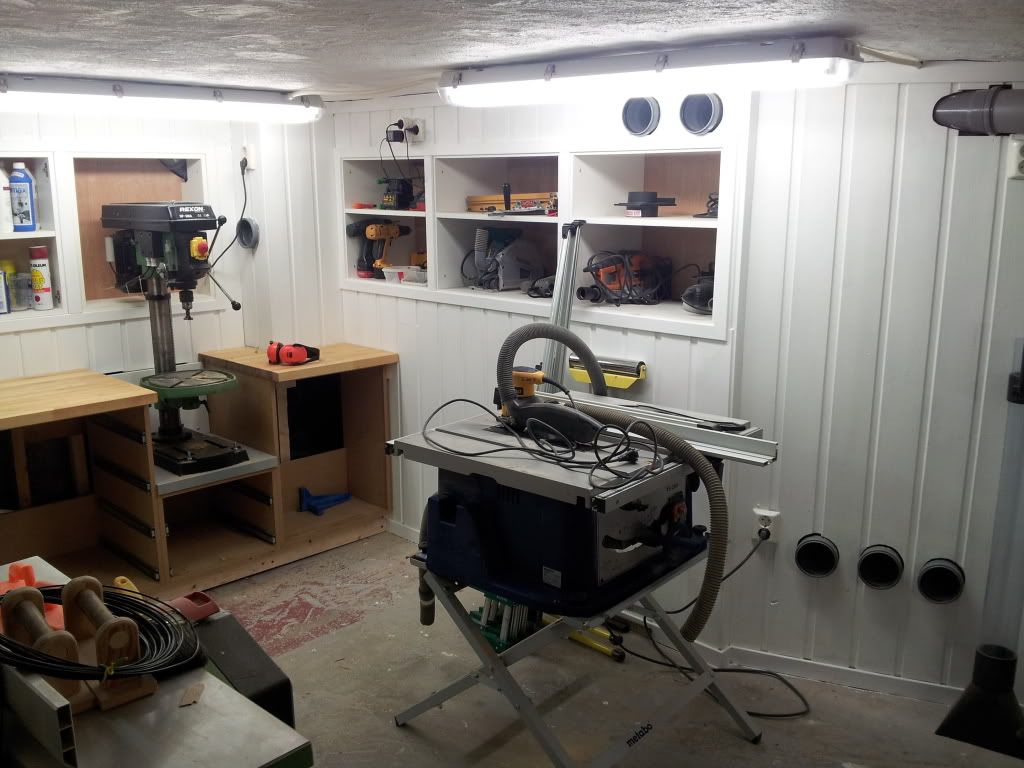Warning ! Long thread with many pictures.
Please bear with me ....................
After going through 4 shop vacs with all the inherent problems of blocked filters, reduced suction and small capacity I’ve finally got around to doing something permanent and proper with my dust extraction.
I set myself the following criteria :-
- fixed ductwork.
- no cables or pipes dragged across the floor.
- extraction from all my machines and power tools.
- remote start of extractor(s) from each machine and each power tool.
- minimal noise.
- minimal dust returned to the workshop environment.
- no reduction of suction due to blocked filters.
Initially I came close to buying a 2-motor Camvac combined with a small cyclone and big bucket, but at the last minute was persuaded out of it. I have a head room issue in my basement workshop which necessitates running all the fixed ductwork around the walls and with the last machine 13 meters from the extractor a Camvac, even with 4” ducts, would never have coped.
Plan B became a dual system with an Axminster ADE2200 HVLP chip extractor running through fixed ductwork and some kind of LVHP vacuum extractor for the power tools. I briefly considered using my existing shopvac with a Dust Deputy but there had to be a better way. Hanging on the wall in the basement we have a central vacuum cleaner unit which is connected via 2.5” fixed pipework to various suction outlets in the house. Essentially a wall mounted Camvac/Record LVHP extractor. Could I somehow also use this as my power tool extractor ?
The central vacuum cleaner has a 12V remote start circuit that starts the cleaner when a hose is plugged into one of the suction points. If I could utilise this facility, rig up a switch at the power tool end of the hose, and at the same time incorporate the mains power cable with the hose, then I’d almost have a Festools setup – maybe even better !
This is how I did it :-
The vacuum cleaner has a fine filter and exhaust direct to the outside. Obviously the filter would get blocked just as quickly as in a shopvac. I solved that problem by hooking it up via a Dust Deputy. The 2,5” flexible hose came from Rutlands. Exhaust pipe not finished in picture but now routed out through wall.
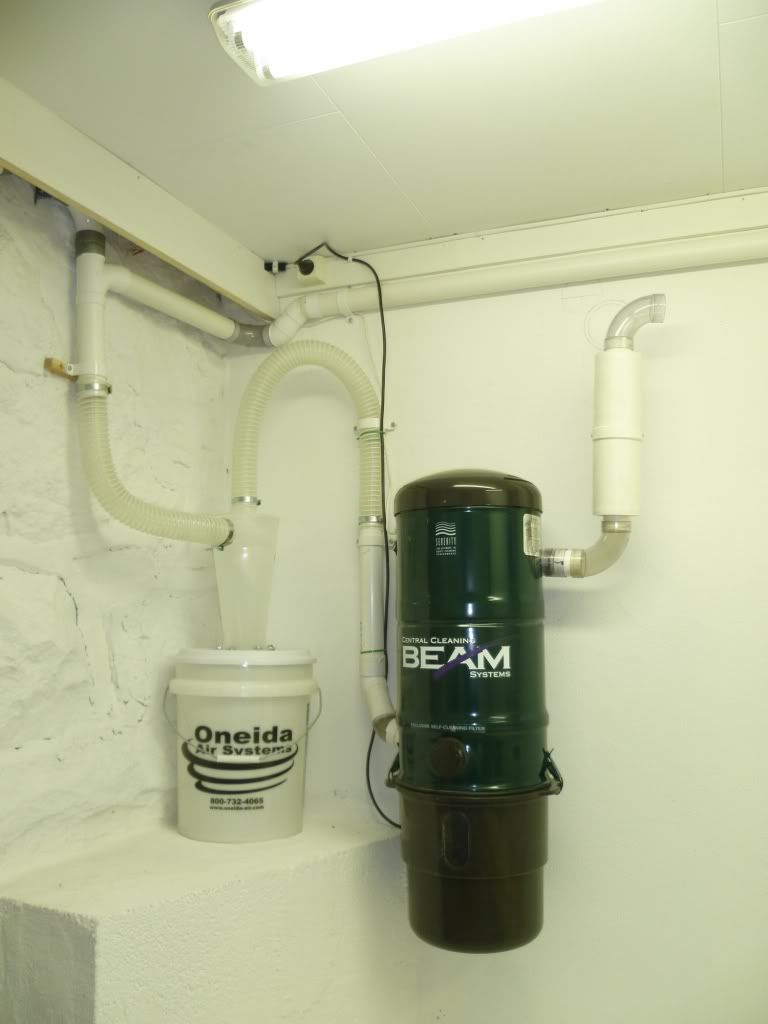
The vacuum unit, although quite powerful, has only one motor so I rerouted all the 2.5” pipework to give the shortest possible run. White pipe in the picture. The short branch to the right will go to my SCMS.
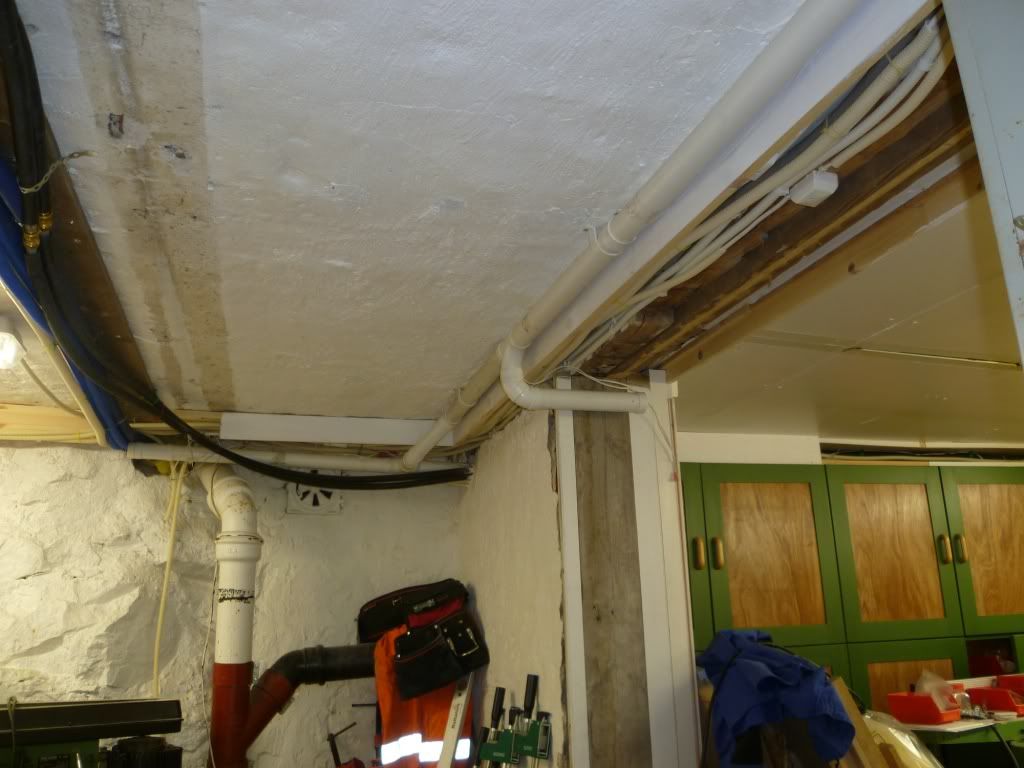
Above each bench I’ll mount a suction outlet adjacent to a power socket and, to run the 12V start circuit, a panel mounted car cigarette lighter socket. Power socket not yet installed in picture.
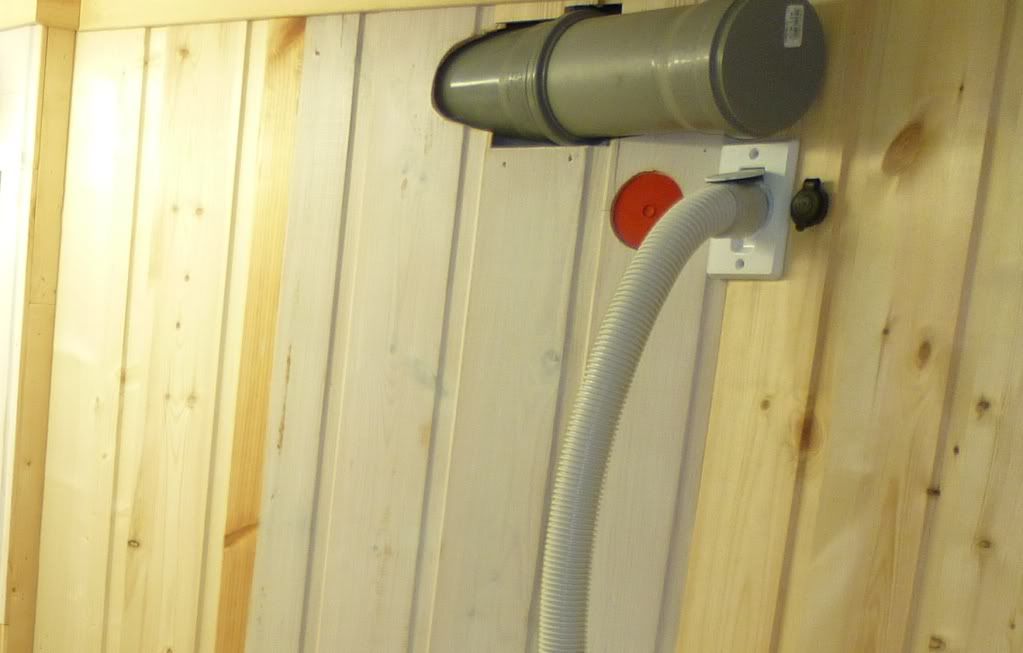
If I was to be able to incorporate the mains power cable with the extraction hose then I would have to replace the cable on each power tool with something similar to the plug & socket setup Festools use. After a lot of hunting I found these https://www.elfa.se/elfa3~eu_en/elfa/init.do?init=1
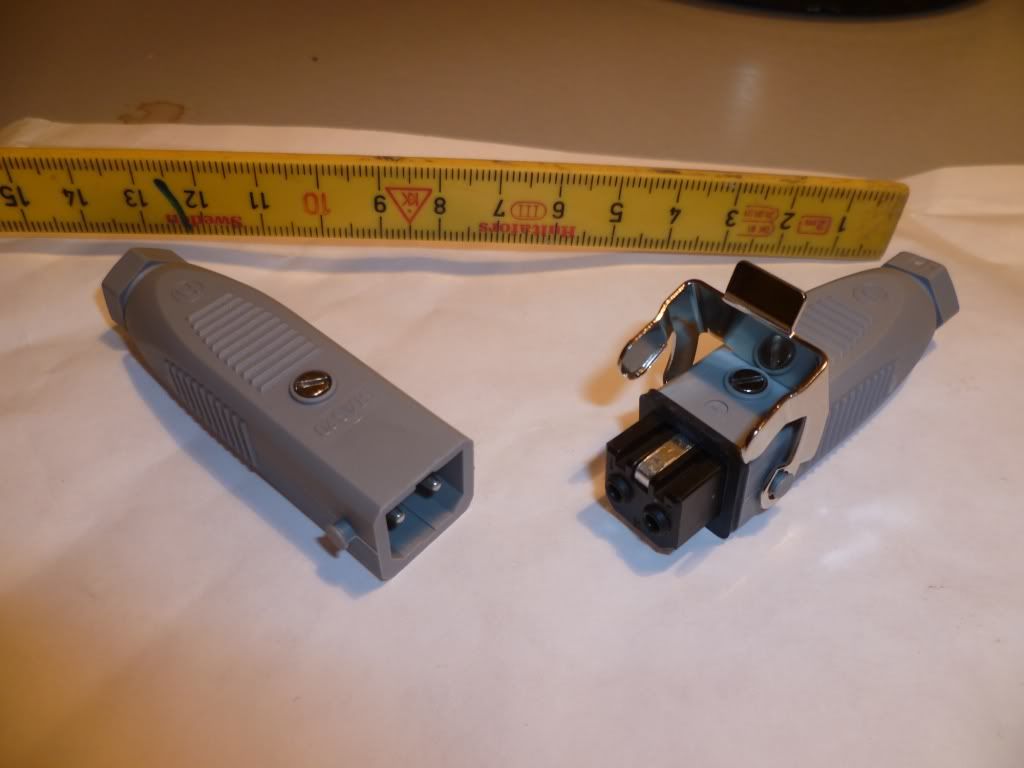
Modified Makita plunge saw
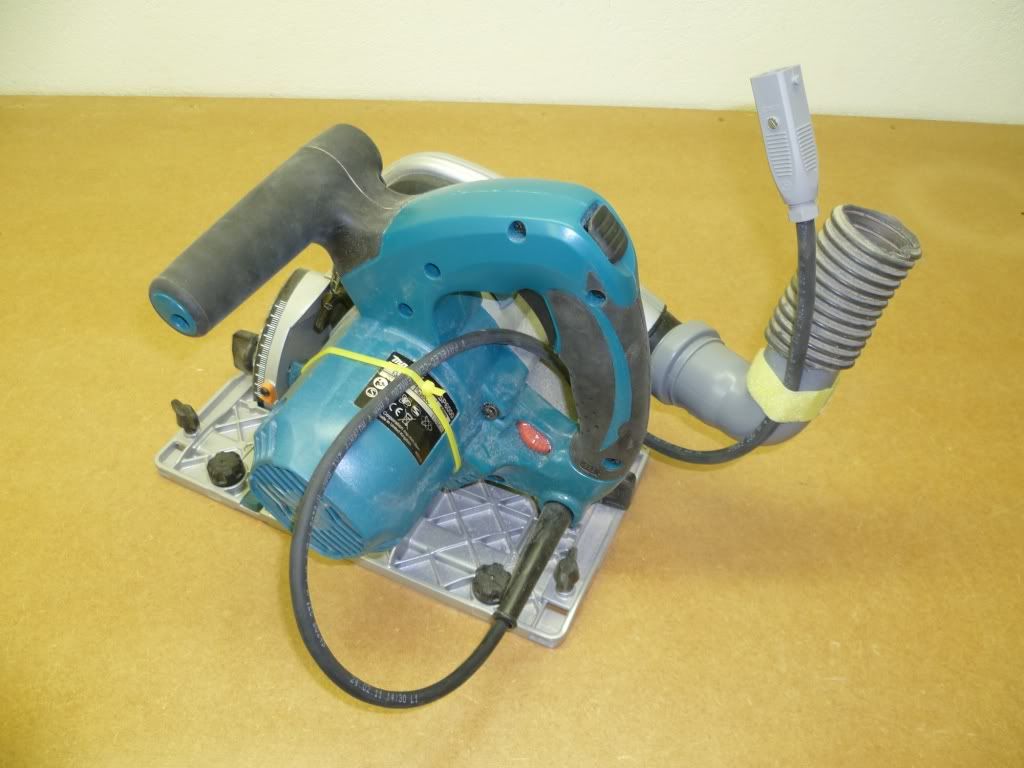
These are all the components I needed to rig up a complete extractor hose with integrated 12V start circuit and mains supply cable.
35mm extractor hose (from a central vacuum cleaner supplier)
Power tool adaptor (Axminster)
2-pole mains power mini socket. (Elfa Electronics)
Standard mains power plug (European type)
Small switch for 12V start circuit (not shown in picture)
12V plug (car cigarette lighter type)
2 x 1,0mm2 mains cable with rubber sheath
2 x 0,75mm2 cable for 12V circuit.
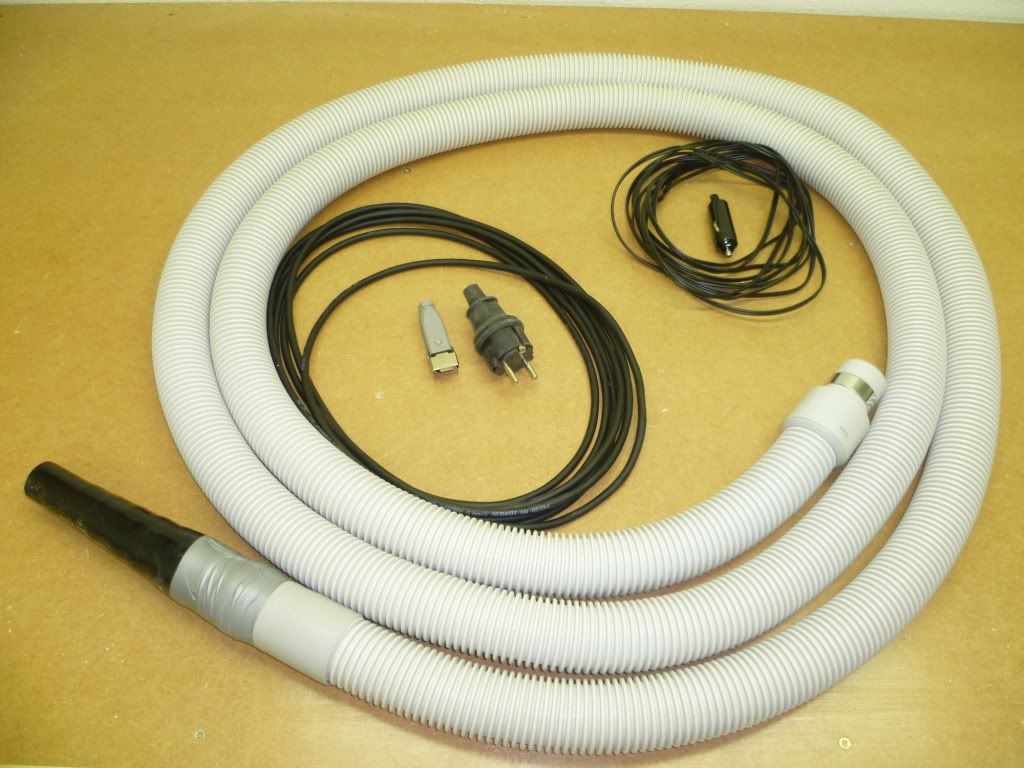
Initially I’ve attached both cables to the hose with plastic strips but have a braided sleeve and some heat-shrink shroud on order which I hope will be a better solution.
This kind of thing although I’ve ordered mine locally http://www.cmwltd.co.uk/index.php?main_page=product_info&cPath=1_22&products_id=266
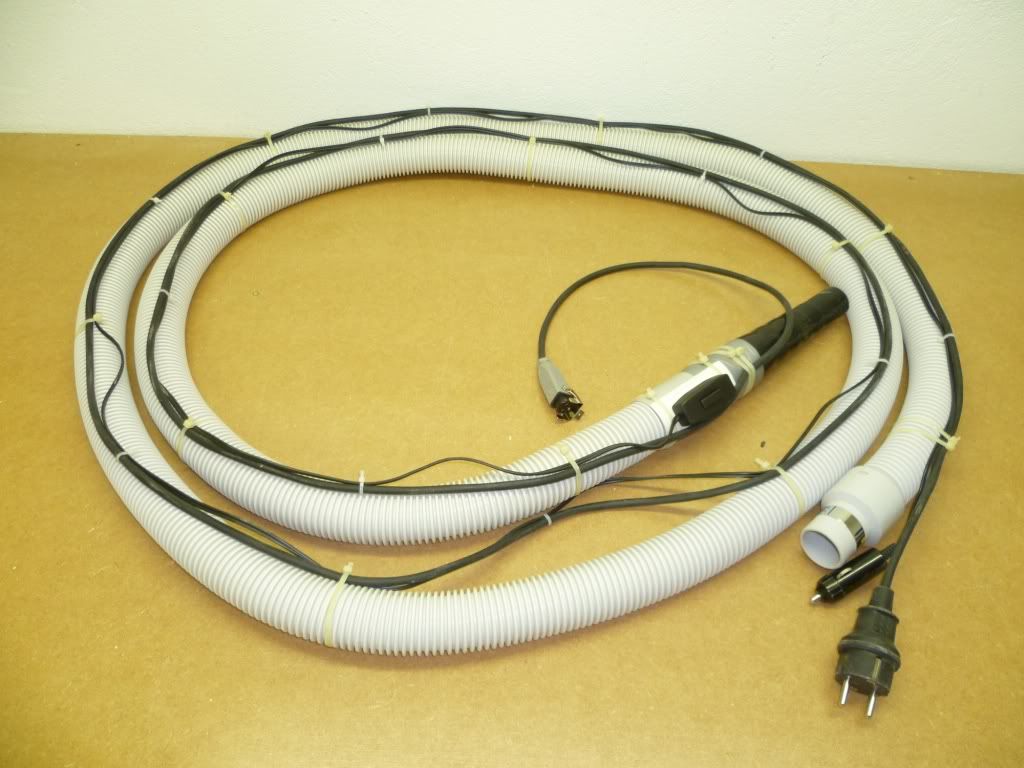
Here’s the complete setup connected to my plunge saw. For the moment I’ve left the mains cable a bit over long until I decide the optimal length.
At the wall outlet end (temporary connection in picture) I plug the hose into the suction point, and the 12V plug and mains plug into their respective sockets. At the power tool end I connect the mini mains plug & sockets together and attach the hose. When I flick the small 12V switch the extractor starts and stops.
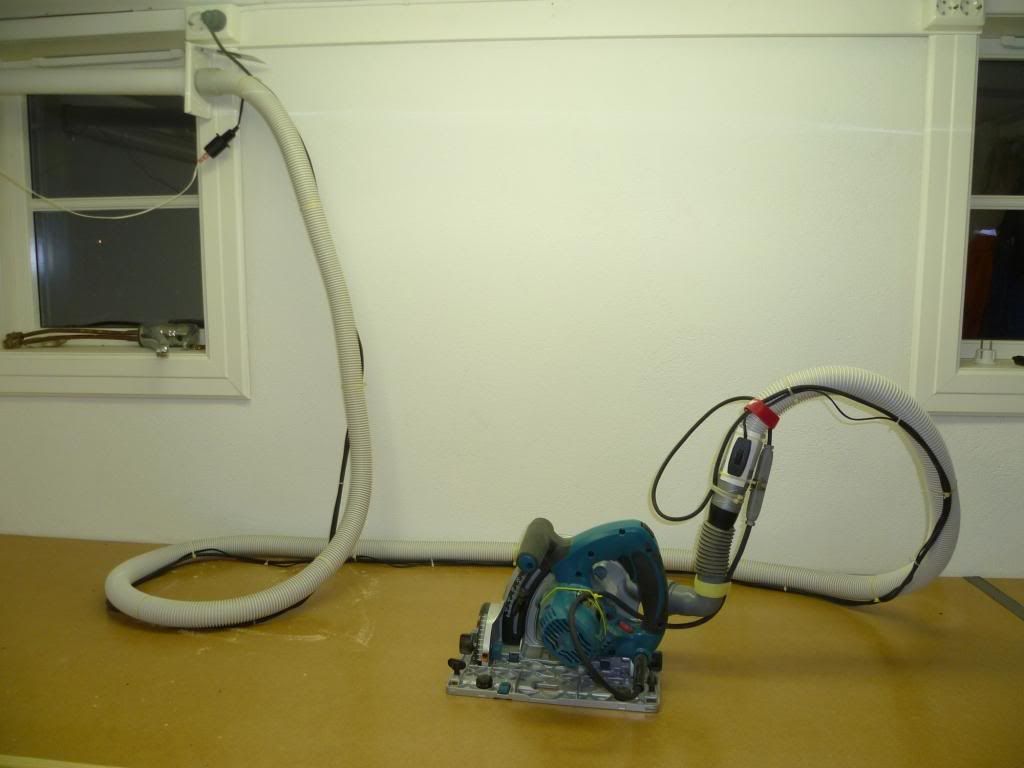
Does it work ?
This is the result after filling one DD bucket. Vacuum unit bucket on the right. The dust on the floor is all I managed to shake out of the filter. The level of suction has stayed at the same level the whole time.
Success !
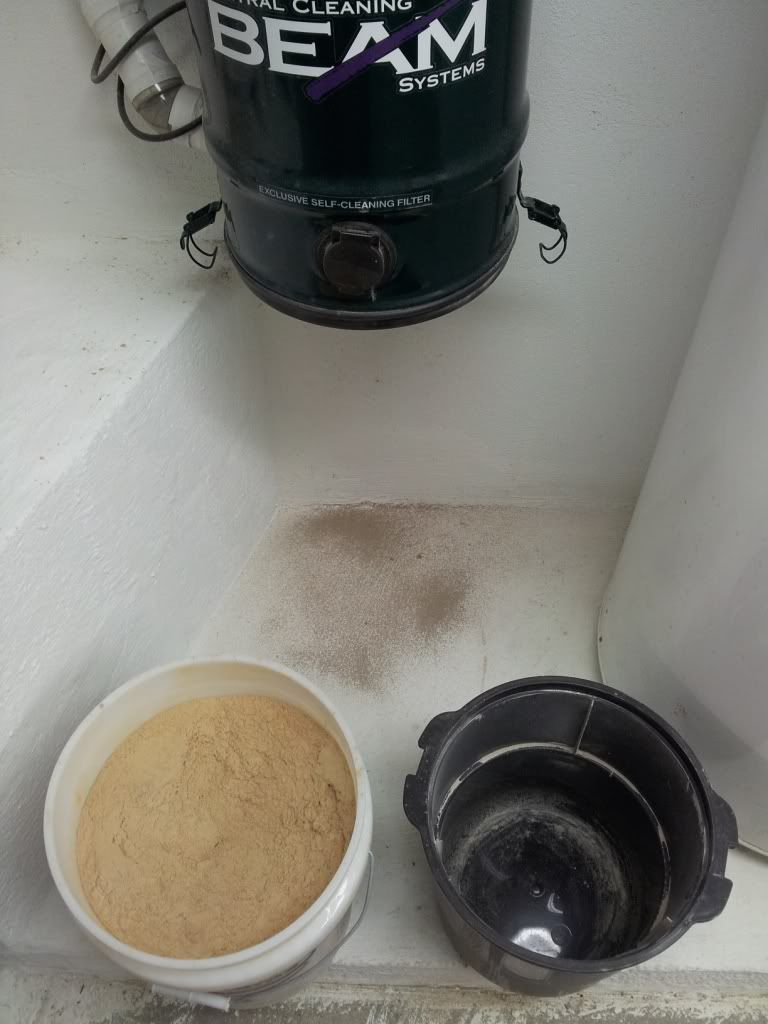
Hope this was of some interest. I’ll post more as I develop the rest of the system and install the ADE2200 extractor, ductwork and homemade blastgates etc.
Mark
.
Please bear with me ....................
After going through 4 shop vacs with all the inherent problems of blocked filters, reduced suction and small capacity I’ve finally got around to doing something permanent and proper with my dust extraction.
I set myself the following criteria :-
- fixed ductwork.
- no cables or pipes dragged across the floor.
- extraction from all my machines and power tools.
- remote start of extractor(s) from each machine and each power tool.
- minimal noise.
- minimal dust returned to the workshop environment.
- no reduction of suction due to blocked filters.
Initially I came close to buying a 2-motor Camvac combined with a small cyclone and big bucket, but at the last minute was persuaded out of it. I have a head room issue in my basement workshop which necessitates running all the fixed ductwork around the walls and with the last machine 13 meters from the extractor a Camvac, even with 4” ducts, would never have coped.
Plan B became a dual system with an Axminster ADE2200 HVLP chip extractor running through fixed ductwork and some kind of LVHP vacuum extractor for the power tools. I briefly considered using my existing shopvac with a Dust Deputy but there had to be a better way. Hanging on the wall in the basement we have a central vacuum cleaner unit which is connected via 2.5” fixed pipework to various suction outlets in the house. Essentially a wall mounted Camvac/Record LVHP extractor. Could I somehow also use this as my power tool extractor ?
The central vacuum cleaner has a 12V remote start circuit that starts the cleaner when a hose is plugged into one of the suction points. If I could utilise this facility, rig up a switch at the power tool end of the hose, and at the same time incorporate the mains power cable with the hose, then I’d almost have a Festools setup – maybe even better !
This is how I did it :-
The vacuum cleaner has a fine filter and exhaust direct to the outside. Obviously the filter would get blocked just as quickly as in a shopvac. I solved that problem by hooking it up via a Dust Deputy. The 2,5” flexible hose came from Rutlands. Exhaust pipe not finished in picture but now routed out through wall.

The vacuum unit, although quite powerful, has only one motor so I rerouted all the 2.5” pipework to give the shortest possible run. White pipe in the picture. The short branch to the right will go to my SCMS.

Above each bench I’ll mount a suction outlet adjacent to a power socket and, to run the 12V start circuit, a panel mounted car cigarette lighter socket. Power socket not yet installed in picture.

If I was to be able to incorporate the mains power cable with the extraction hose then I would have to replace the cable on each power tool with something similar to the plug & socket setup Festools use. After a lot of hunting I found these https://www.elfa.se/elfa3~eu_en/elfa/init.do?init=1

Modified Makita plunge saw

These are all the components I needed to rig up a complete extractor hose with integrated 12V start circuit and mains supply cable.
35mm extractor hose (from a central vacuum cleaner supplier)
Power tool adaptor (Axminster)
2-pole mains power mini socket. (Elfa Electronics)
Standard mains power plug (European type)
Small switch for 12V start circuit (not shown in picture)
12V plug (car cigarette lighter type)
2 x 1,0mm2 mains cable with rubber sheath
2 x 0,75mm2 cable for 12V circuit.

Initially I’ve attached both cables to the hose with plastic strips but have a braided sleeve and some heat-shrink shroud on order which I hope will be a better solution.
This kind of thing although I’ve ordered mine locally http://www.cmwltd.co.uk/index.php?main_page=product_info&cPath=1_22&products_id=266

Here’s the complete setup connected to my plunge saw. For the moment I’ve left the mains cable a bit over long until I decide the optimal length.
At the wall outlet end (temporary connection in picture) I plug the hose into the suction point, and the 12V plug and mains plug into their respective sockets. At the power tool end I connect the mini mains plug & sockets together and attach the hose. When I flick the small 12V switch the extractor starts and stops.

Does it work ?
This is the result after filling one DD bucket. Vacuum unit bucket on the right. The dust on the floor is all I managed to shake out of the filter. The level of suction has stayed at the same level the whole time.
Success !

Hope this was of some interest. I’ll post more as I develop the rest of the system and install the ADE2200 extractor, ductwork and homemade blastgates etc.
Mark
.




